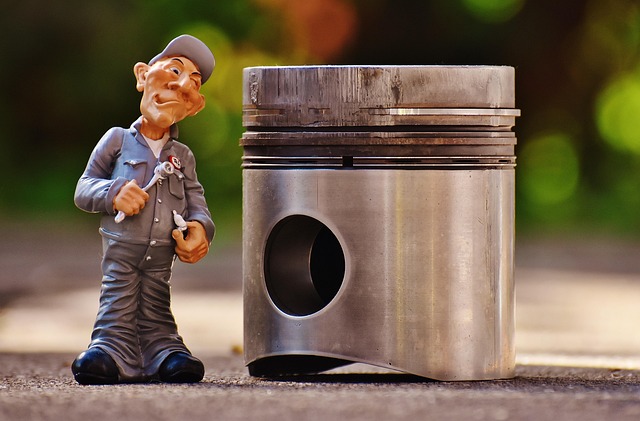Looking to register your car in California? This guide walks you through every step, from understanding key requirements to crucial VIN verification. First, grasp the mandatory documents needed for registration. Next, conduct a Vehicle Identification Number (VIN) check, a vital part of the process. Once ready, visit the DMV to apply for registration and title. Finally, complete post-registration tasks and place your plates. Ensure everything is in order with successful VIN verification for a smooth car registration experience.
- Understand California Car Registration Requirements
- Gather Necessary Documents for VIN Verification
- Perform Vehicle Identification Number (VIN) Check
- Apply for Registration and Title at DMV
- Complete Post-Registration Tasks and Plate Placement
Understand California Car Registration Requirements

Before registering your car in California, it’s crucial to understand the state’s requirements for vehicle registration. These include ensuring that your vehicle meets all safety and emissions standards set by the California Department of Motor Vehicles (DMV). One key aspect is a thorough vin verification process. This involves checking the vehicle identification number (VIN) to confirm its authenticity and history, which is essential for preventing stolen vehicles from being registered.
A mobile vin inspection or mobile vin verifier can play a significant role in this process by offering convenient and efficient vin verification services directly at your location. These services use advanced technology to cross-reference the VIN with various databases, providing instant access to detailed vehicle history reports that include accident records, ownership changes, and maintenance records. This ensures compliance with California’s registration regulations and can streamline the overall registration process.
Gather Necessary Documents for VIN Verification

Before you begin the car registration process in California, it’s crucial to gather all necessary documents for VIN (Vehicle Identification Number) verification. This includes your vehicle’s registration certificate from the previous state, a valid driver’s license, proof of insurance, and your purchase agreement or sales receipt. Additionally, having a mobile vin verifier on hand can streamline this step significantly. Many services offer mobile vin inspection, allowing you to verify your car’s VIN right at the time of purchase.
Ensure all documents are up-to-date and accurate. Your vehicle’s title should be in your name, reflecting any recent transfers or purchases. During the registration, you’ll need to provide this information to the California Department of Motor Vehicles (DMV). Having these documents readily available will ensure a smoother process, so take the time to organize them before heading to the DMV.
Perform Vehicle Identification Number (VIN) Check

Before you can register your car in California, it’s crucial to perform a Vehicle Identification Number (VIN) check. This step is essential for verifying the vehicle’s history and ensuring it meets all legal requirements. A VIN inspection reveals critical information such as the make, model, year, and previous owners of the car, which can help detect any potential issues or discrepancies.
Consider using a mobile vin verifier for this process. These services allow you to conduct a quick and convenient VIN verification right from your smartphone. Simply input the VIN into the app and let the technology do its job. This modern approach to vin inspection offers peace of mind, ensuring that your vehicle is safe and compliant with California’s registration standards before you make any final decisions.
Apply for Registration and Title at DMV

To begin the registration process for your car in California, you’ll need to apply for both a vehicle registration and a certificate of title at the Department of Motor Vehicles (DMV). This typically involves providing essential documentation, including proof of ownership, identification, and possibly, a valid insurance card. Before submitting your application, ensure that your vehicle meets all safety and emission standards, as failure to do so could delay the registration process.
A crucial step in this process is the vin verification. You can facilitate this with a mobile vin verifier or conduct a vin inspection yourself to gather the necessary information. The unique 17-character vehicle identification number (VIN) serves as a digital fingerprint for your car, ensuring accuracy and security during registration.
Complete Post-Registration Tasks and Plate Placement

After successfully registering your vehicle with the California Department of Motor Vehicles (DMV), there are a few crucial post-registration tasks to complete. One of the most important steps is performing a Vehicle Identification Number (VIN) verification. This process ensures that your car’s details, including its make, model, and year, match the information on record. You can opt for a mobile VIN inspection or visit a DMV location for this verification. Having accurate records is vital to maintaining compliance with California’s vehicle regulations.
Additionally, you’ll need to ensure that your license plates are correctly placed on your vehicle. The DMV provides detailed guidelines on plate placement, which must be followed precisely. Once verified and plated, your car is ready to hit the road legally. Always remember that proper documentation and adherence to local laws are essential for a seamless ownership experience.
Registering a car in California involves understanding state requirements, gathering essential documents, passing a VIN verification check, and completing several post-registration tasks. By following these steps outlined in the article, you’ll be well on your way to legally owning and operating a vehicle in The Golden State. Remember, accurate documentation and a thorough VIN verification process are crucial to ensuring a smooth registration experience.
